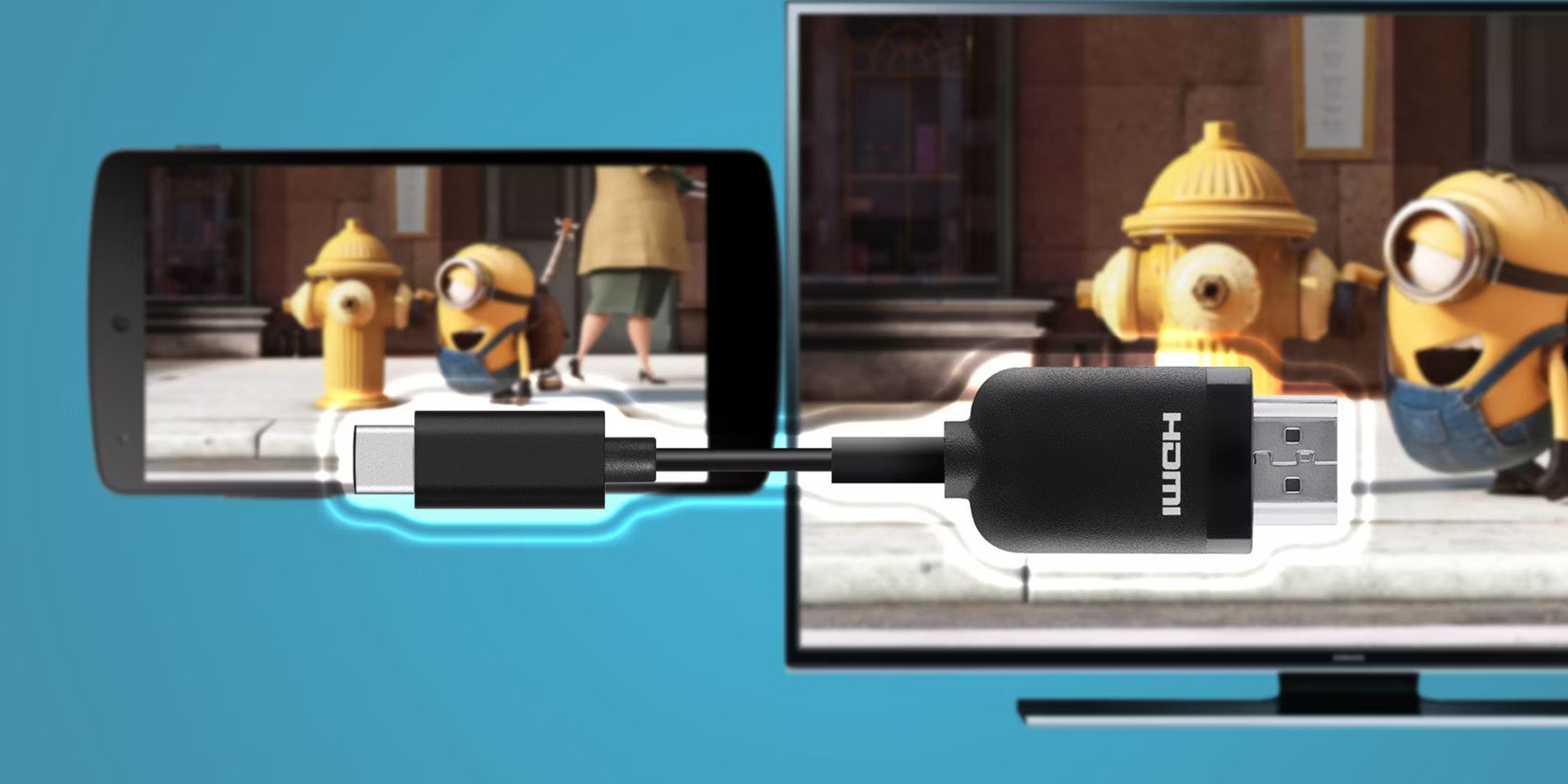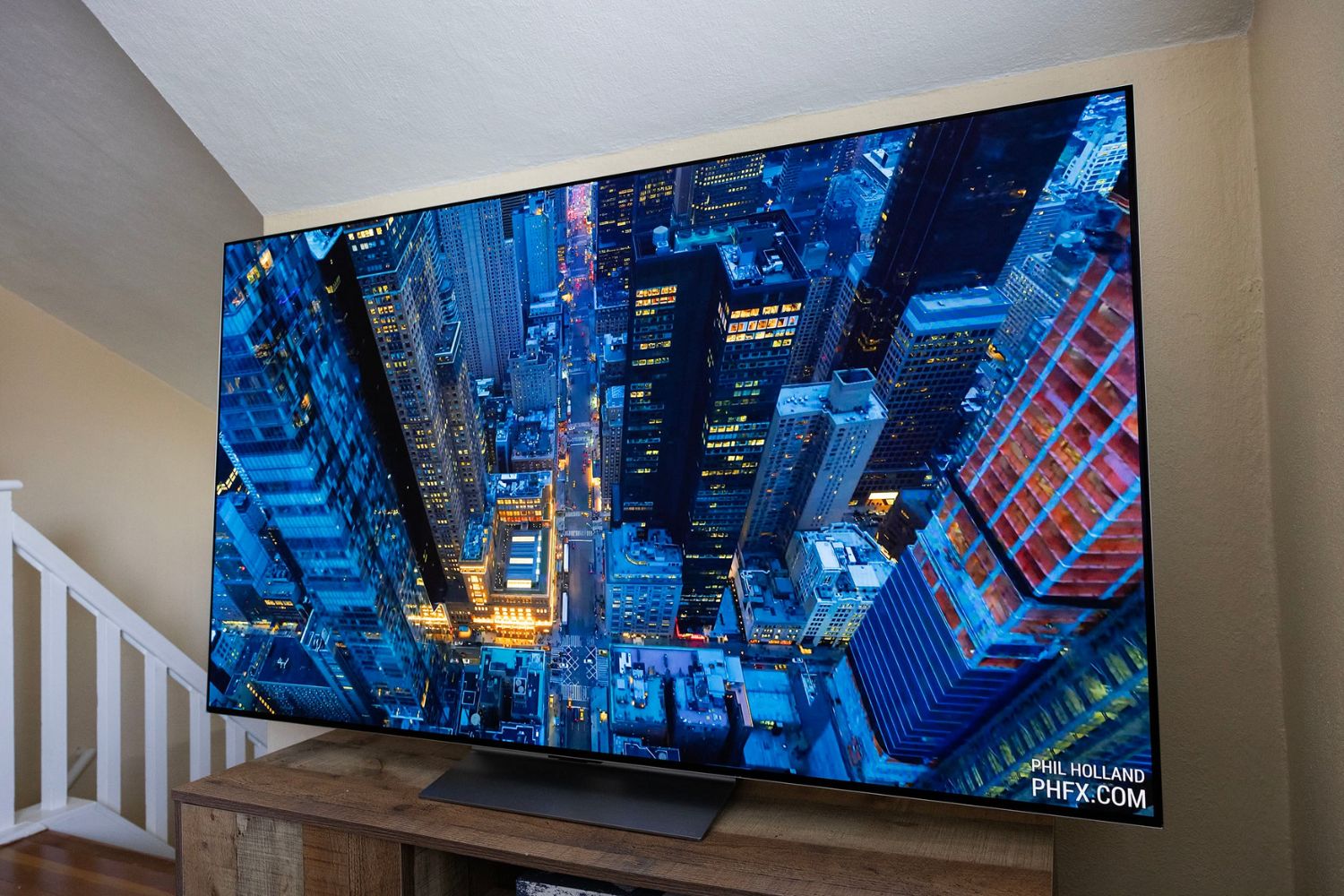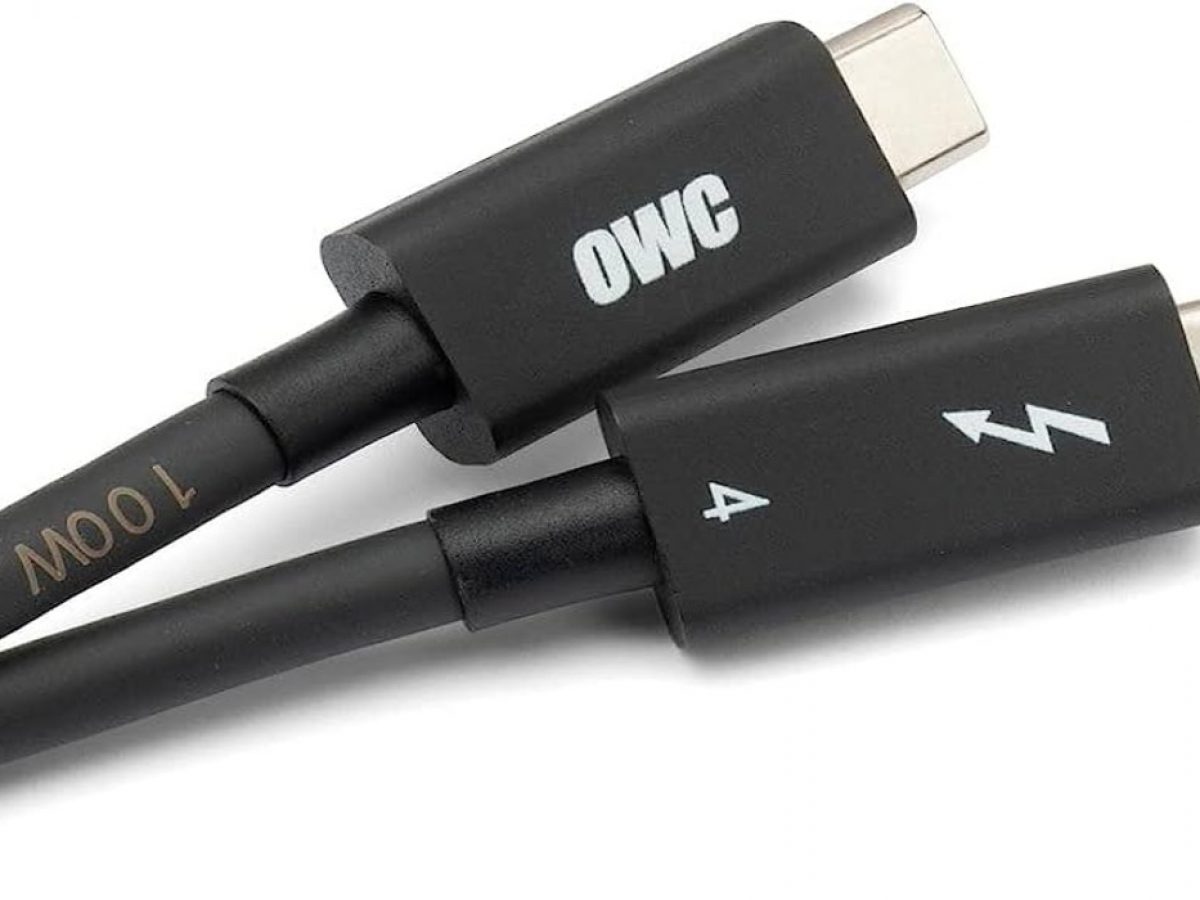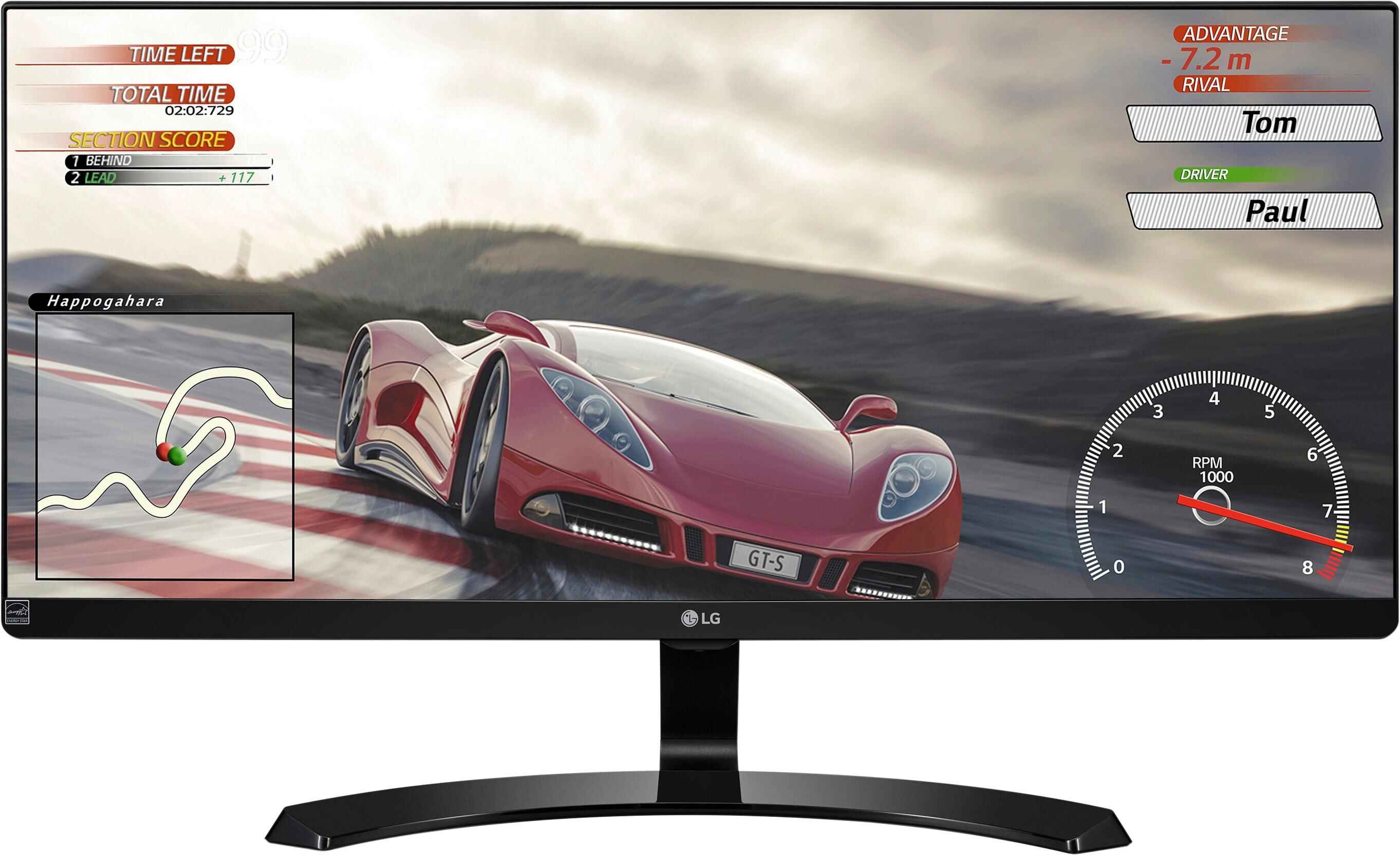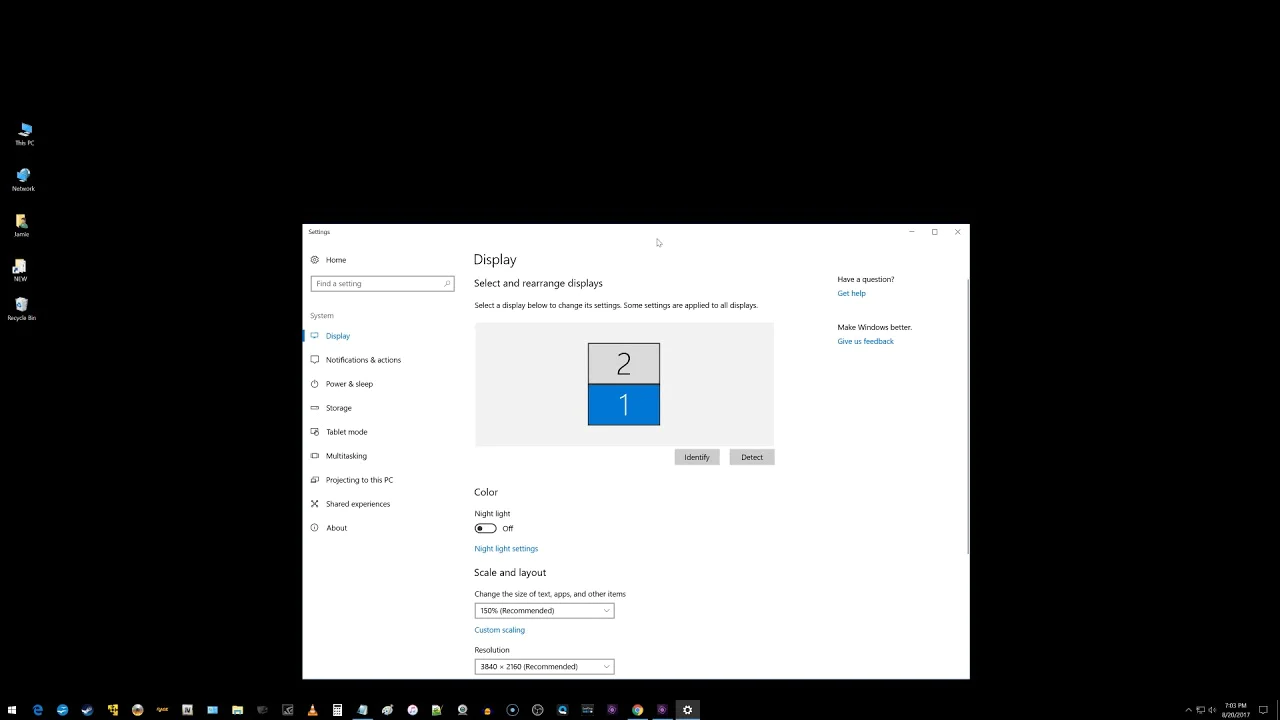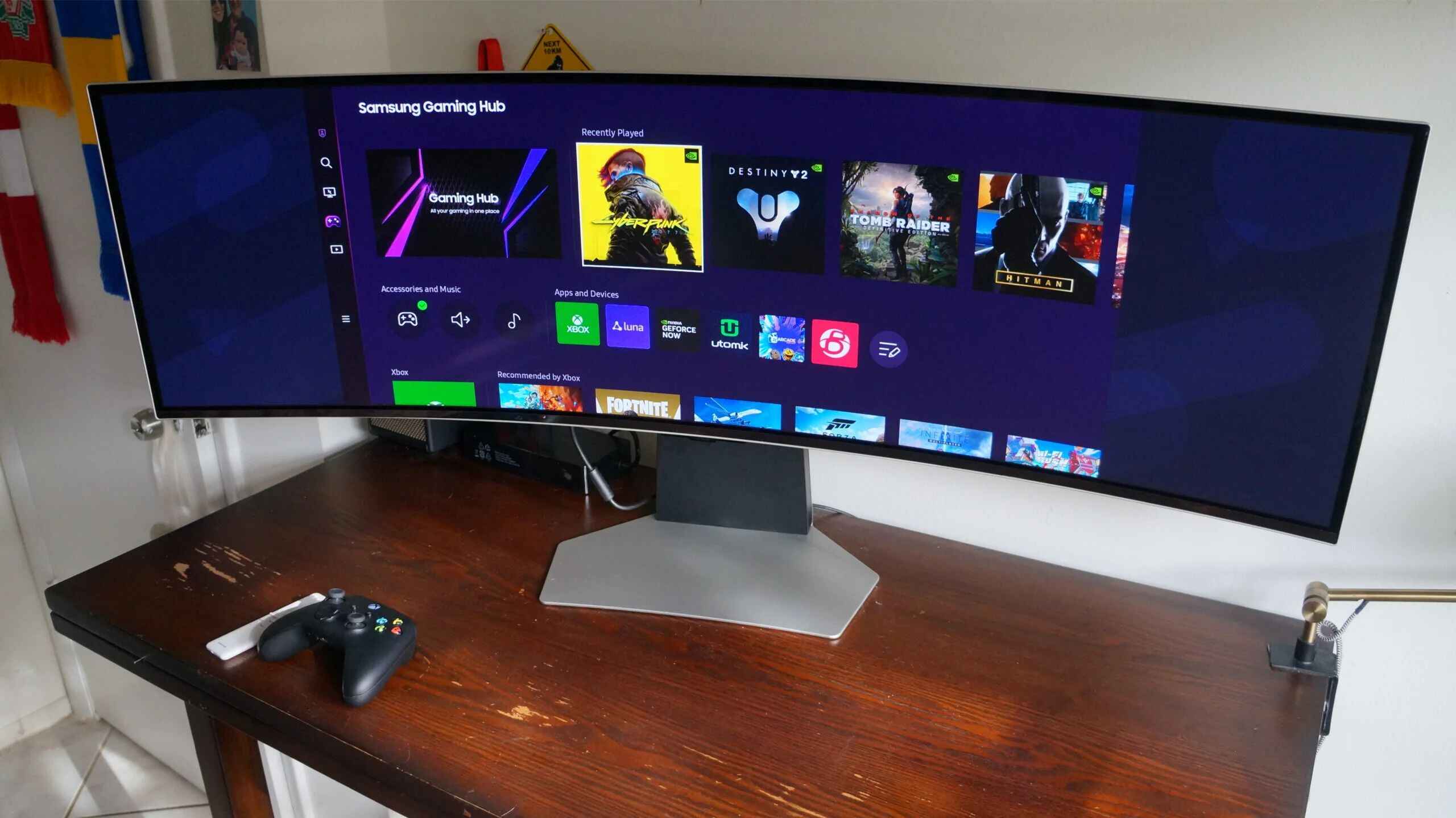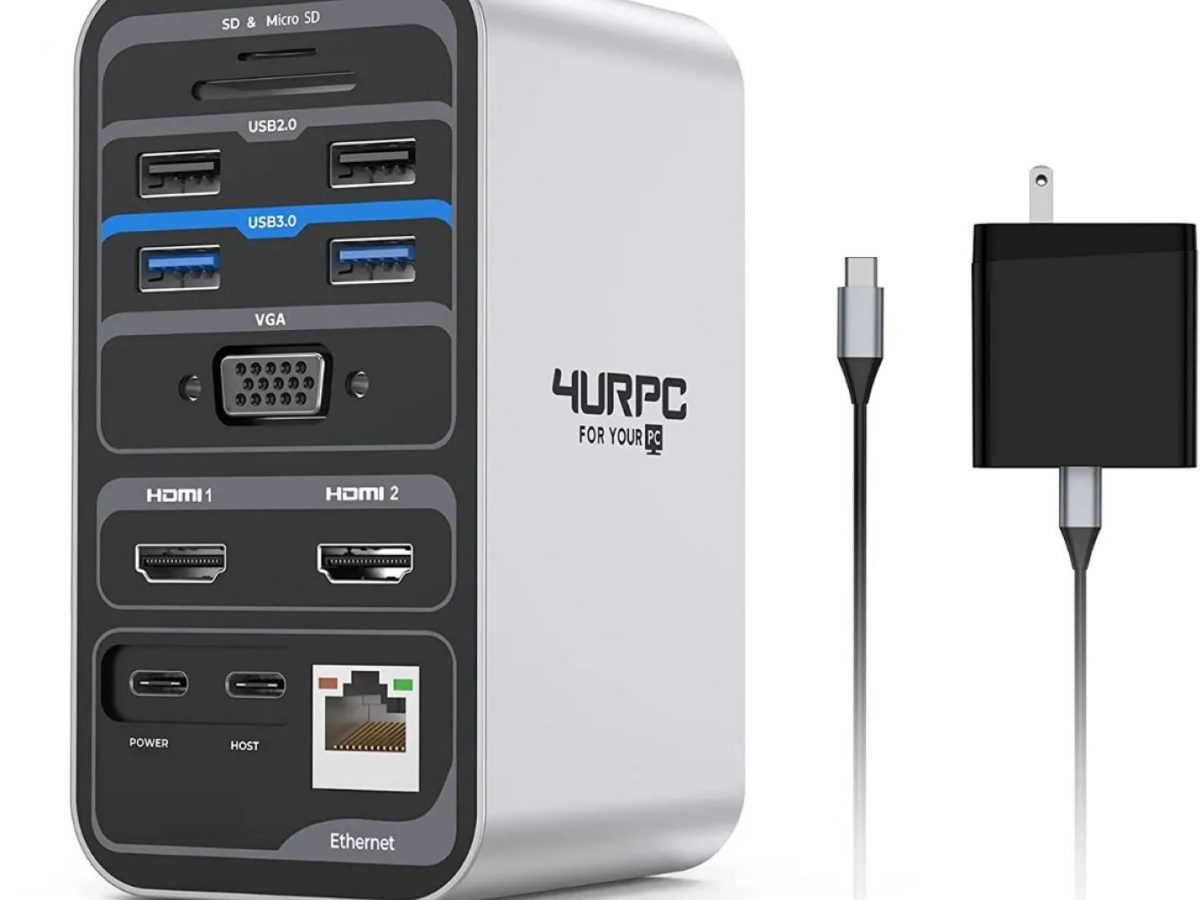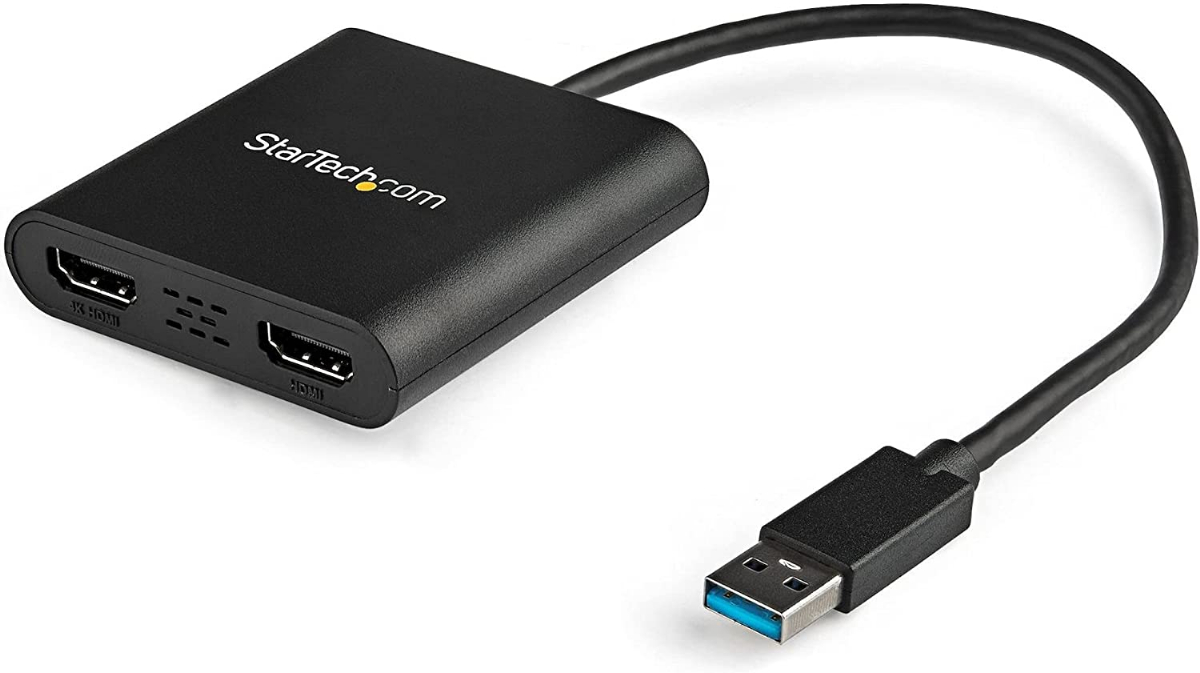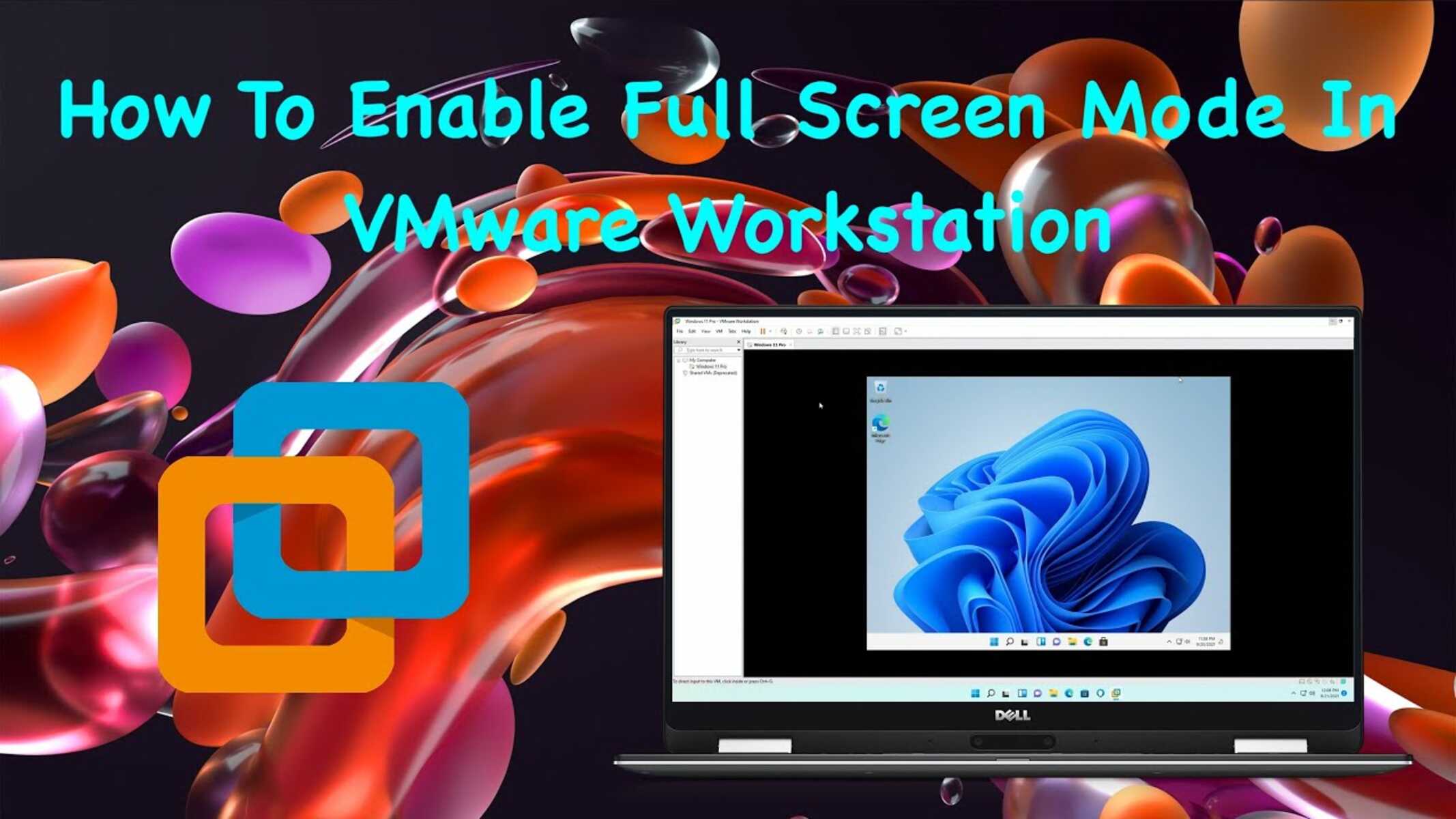Introduction
Welcome to our guide on how to enable HDMI Alt Mode on your device! HDMI Alt Mode is a feature that allows you to connect your device, such as a smartphone or laptop, directly to an HDMI display without the need for an adapter or converter. This eliminates the hassle of dealing with multiple cables and provides a convenient way to enjoy high-quality audio and video on a larger screen.
In this article, we will explain what HDMI Alt Mode is, discuss the devices that support it, explain how to check if your device supports it, and guide you through the process of enabling HDMI Alt Mode on your device. We will also provide helpful tips for troubleshooting any issues you may encounter.
Whether you want to stream videos, play mobile games on a bigger screen, or give presentations with professional-grade connectivity, HDMI Alt Mode opens up a new world of possibilities. So, let’s dive in and learn how to harness the power of HDMI Alt Mode!
What is HDMI Alt Mode?
HDMI Alt Mode is a technology that allows devices to transmit both audio and video signals through a USB-C port using the HDMI (High-Definition Multimedia Interface) standard. It eliminates the need for a separate HDMI port on the device, as the USB-C port serves as a multipurpose connector. This feature enables devices with USB-C ports, such as smartphones, tablets, laptops, and even some gaming consoles, to connect directly to HDMI displays, such as TVs and monitors.
Previously, users had to rely on adapters or dongles to connect their devices to external displays, which often added extra bulk and complexity. With HDMI Alt Mode, the simplicity and convenience of a single cable connection are achieved. The HDMI signal is transmitted directly from the USB-C port to the HDMI display, allowing for high-quality audio and video playback.
It is important to note that HDMI Alt Mode requires both the device and the HDMI display to support the HDMI 1.4 or later standard. This ensures compatibility and optimal performance. However, not all devices equipped with a USB-C port support HDMI Alt Mode, as it depends on the device’s hardware and software capabilities.
HDMI Alt Mode also supports additional features, such as HDCP (High-bandwidth Digital Content Protection) for copyright protection, 3D video playback, and 4K Ultra HD resolution. This means you can enjoy a stunning visual experience on your HDMI-enabled display, whether you are watching movies, playing games, or giving presentations.
In summary, HDMI Alt Mode is a revolutionary technology that simplifies the process of connecting devices to HDMI displays. It eliminates the need for adapters or converters and provides a direct, high-quality audio and video connection through a USB-C port. By enabling HDMI Alt Mode, you can unlock the full potential of your device and enjoy an immersive multimedia experience on a larger screen.
Devices that Support HDMI Alt Mode
HDMI Alt Mode is becoming increasingly common in devices equipped with USB-C ports. While not all devices with USB-C support HDMI Alt Mode, many newer models have this capability. Here are some examples of devices that typically support HDMI Alt Mode:
- Smartphones: Many flagship smartphones from leading manufacturers, such as Samsung, LG, and Google, now feature HDMI Alt Mode. This allows you to connect your smartphone directly to an HDMI display and enjoy your content on a larger screen.
- Laptops and Tablets: Convertible laptops, 2-in-1 devices, and tablets that come with USB-C ports often support HDMI Alt Mode. This feature extends the versatility of these devices, allowing you to connect them to external monitors or TVs for a more immersive computing experience.
- Gaming Consoles: Some gaming consoles, such as the Nintendo Switch, support HDMI Alt Mode. This enables you to connect your console directly to a TV or monitor without the need for a separate docking station.
- Video Cameras: Certain video cameras with USB-C ports also support HDMI Alt Mode. This can be useful for live streaming, video recording, or displaying content on an external display.
- Desktop Computers: Some desktop computers now come with USB-C ports that support HDMI Alt Mode. This allows for a cleaner and simpler setup, reducing the need for additional cables and adapters.
It’s important to check the specifications of your specific device to determine if it supports HDMI Alt Mode. Manufacturers usually include this information in the product documentation or on their official websites.
Keep in mind that older devices or devices with different types of USB ports, such as USB-A or Thunderbolt, may not support HDMI Alt Mode. Additionally, compatibility can vary depending on the operating system and device settings. Therefore, it’s always a good idea to verify the HDMI Alt Mode support for your device before attempting to connect it to an HDMI display.
Now that you’re aware of some devices that commonly support HDMI Alt Mode, let’s move on to the next section to learn how to check if your specific device is compatible.
How to Check if Your Device Supports HDMI Alt Mode
Before attempting to enable HDMI Alt Mode on your device, it’s essential to confirm that your device actually supports this feature. Here are a few steps you can follow to check if your device is HDMI Alt Mode compatible:
- Consult the Device Manual: The first and most reliable source of information about your device’s capabilities is the user manual. Look for any mentions of HDMI Alt Mode or HDMI connectivity in the manual or the specifications section. The manual may also provide instructions on how to enable HDMI Alt Mode if your device supports it.
- Check the Manufacturer’s Website: Visit the official website of the device manufacturer and search for your specific device model. Look for the product specifications or features section, where you may find information about HDMI Alt Mode compatibility. Manufacturers often provide detailed technical information about their devices, including supported connection protocols.
- Research Online Resources: Online forums, tech review websites, and community discussions can be valuable sources of information. Search for your device model along with terms like “HDMI Alt Mode” or “USB-C HDMI compatibility” to see if other users have successfully used HDMI Alt Mode with the same device. It’s important to be cautious and verify the information from multiple reputable sources.
- Contact Customer Support: If you’re still unsure about your device’s HDMI Alt Mode compatibility, reach out to the customer support team of the device manufacturer. They can provide you with accurate information about your device’s capabilities and guide you through the process of enabling HDMI Alt Mode if it is available.
Remember that not all devices with USB-C ports support HDMI Alt Mode, even if they support other USB-C features. Additionally, compatibility may vary depending on the device’s hardware, operating system, and manufacturer implementation. Therefore, it’s crucial to gather information specific to your device before attempting to use HDMI Alt Mode.
Once you have confirmed that your device supports HDMI Alt Mode, you can proceed with enabling this feature. In the next section, we will guide you through the steps to enable HDMI Alt Mode on your device.
Enabling HDMI Alt Mode on Your Device
Enabling HDMI Alt Mode on your device may vary depending on the make and model. However, the following general steps can guide you through the process.
- Connect USB-C to HDMI Cable: Start by connecting one end of a USB-C to HDMI cable to the USB-C port on your device. Ensure that the cable is securely plugged in.
- Connect HDMI Display: Connect the other end of the USB-C to HDMI cable to the HDMI input port on your HDMI display device, such as a TV or monitor.
- Select HDMI Input: On your HDMI display device, use the remote control or the buttons on the device itself to select the HDMI input corresponding to the port you connected the cable to.
- Enable HDMI Alt Mode on Your Device: Depending on your device’s settings, HDMI Alt Mode may be automatically enabled once the cable is connected. However, if it’s not activated, you may need to manually enable it through the device’s settings. Navigate to the “Display” or “Connections” settings on your device and look for an option related to HDMI Alt Mode or USB-C connectivity. Enable or toggle the setting to activate HDMI Alt Mode.
- Adjust Display Settings: Once HDMI Alt Mode is enabled on your device, you may need to adjust the display settings to optimize the visuals for the HDMI display. This can include resolution, aspect ratio, refresh rate, and other display preferences. Check your device’s settings or display options to make any necessary adjustments.
- Enjoy HDMI Alt Mode: Your device should now be connected to the HDMI display, and you can begin enjoying your content on the larger screen. Whether you’re streaming videos, playing games, or giving presentations, HDMI Alt Mode provides a seamless and high-quality connection.
It’s important to note that the specific steps to enable HDMI Alt Mode may differ for various devices and operating systems. Always refer to the device’s user manual or the manufacturer’s instructions for precise guidance on enabling HDMI Alt Mode.
If you experience any issues during the setup process or encounter compatibility problems, refer to the troubleshooting tips in the next section. These tips can help you address common HDMI Alt Mode connectivity issues.
Connecting Your Device to an HDMI Display
Once you have enabled HDMI Alt Mode on your device, you can proceed with connecting it to an HDMI display. Follow these steps to ensure a successful connection:
- Locate the HDMI Port: Identify the HDMI input port on your HDMI display, such as a TV or monitor. It is usually labeled as “HDMI” and may be labeled with a number if there are multiple HDMI ports.
- Connect the HDMI Cable: Take the other end of the USB-C to HDMI cable that is connected to your device and plug it into the HDMI input port on the display. Make sure the cable is securely inserted.
- Switch to the Correct HDMI Input: Use the remote control or the buttons on the HDMI display to switch to the HDMI input corresponding to the port you connected the cable to. Most displays have a source or input button to cycle through the available inputs. Select the HDMI input associated with the USB-C port.
- Configure Display Settings (If Required): In some cases, your HDMI display may require additional configuration. This may involve selecting the correct display mode, adjusting the resolution, or enabling specific features. Refer to the display’s user manual or on-screen instructions to make the necessary adjustments.
Once the above steps are completed, your device should be successfully connected to the HDMI display. The screen of your device should be mirrored or extended onto the larger display, depending on your settings.
It’s worth noting that some devices may automatically adjust the display settings when connected to an HDMI display. However, if the display does not appear or the visuals are not as expected, you can access the display settings on your device and make any necessary adjustments. This may involve changing the resolution, aspect ratio, or orientation to ensure optimal display on the HDMI screen.
Now that you have successfully connected your device to an HDMI display, you can enjoy your content on a larger screen with enhanced audio and video quality. If you encounter any issues during the connection process, refer to the troubleshooting tips in the next section for assistance.
Troubleshooting Tips for HDMI Alt Mode
While HDMI Alt Mode provides a convenient way to connect your device to an HDMI display, you may encounter some common issues during the setup process. Here are some troubleshooting tips to help you resolve these problems:
- Check Cable Connection: Ensure that the USB-C to HDMI cable is securely connected to both your device and the HDMI display. If the cable is loose or not inserted properly, it may result in a faulty connection or no display at all.
- Try Another USB-C Port: If your device has multiple USB-C ports, try connecting the cable to a different port. It’s possible that only specific ports support HDMI Alt Mode on your device.
- Confirm Display Compatibility: Verify that your HDMI display supports HDMI Alt Mode and the HDMI version required by your device. Refer to the display’s manual or consult the manufacturer’s website for compatibility information.
- Restart Devices: Sometimes, a simple restart can fix connectivity issues. Turn off your device and disconnect the HDMI cable, then power on your device and reconnect the cable to see if the connection is established.
- Update Device Software: Ensure that your device has the latest software updates installed. Manufacturers often release software updates to address compatibility issues and improve performance. Check for updates in your device’s settings or through the manufacturer’s website.
- Use an Active Adapter or Dock: If you’re using a passive USB-C to HDMI cable and experiencing connection issues, consider using an active USB-C to HDMI adapter or dock. These devices provide additional signal processing and can help overcome compatibility barriers.
- Test with a Different HDMI Display: If possible, test your device with a different HDMI display to rule out any issues with the display itself. Connect your device to another TV or monitor to see if the connection is established successfully.
If none of the troubleshooting steps resolve your HDMI Alt Mode issues, it’s recommended to contact the manufacturer’s customer support for further assistance. They can provide specialized guidance based on your specific device and help you troubleshoot any compatibility issues or hardware-related problems.
By following these troubleshooting tips, you can overcome common difficulties with HDMI Alt Mode and ensure a reliable connection between your device and the HDMI display.
Conclusion
HDMI Alt Mode is a game-changer when it comes to connecting devices to HDMI displays. By utilizing the USB-C port on your device, HDMI Alt Mode provides a straightforward and convenient way to enjoy high-quality audio and video on a larger screen without the need for additional adapters or converters.
In this guide, we explored what HDMI Alt Mode is and the devices that typically support this feature. We also learned how to check if your device supports HDMI Alt Mode and how to enable this mode on your device. Additionally, we discussed the steps to connect your device to an HDMI display and provided troubleshooting tips for common issues that may arise during the setup process.
Whether you want to stream your favorite movies, play games on a bigger screen, or deliver professional presentations, HDMI Alt Mode opens up a world of possibilities. It simplifies the connection process, enhances the visual and audio experience, and eliminates the clutter of extra cables and adapters.
Remember to consult your device’s manual, manufacturer’s website, and customer support for specific instructions and compatibility information. Each device may have its own peculiarities and requirements when it comes to HDMI Alt Mode.
Now, armed with the knowledge gained from this guide, you can confidently enable HDMI Alt Mode on your device and enjoy the benefits of seamless connectivity to HDMI displays.







